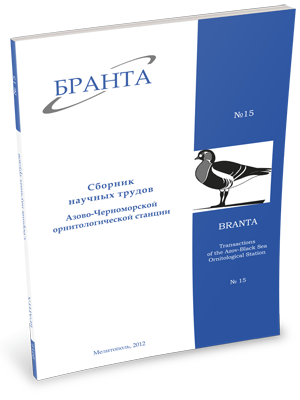
Transactions
of the Azov-Black Sea Ornithological Station



Peculiarities of phenology, dynamics of numbers and character of cranes' stay in the Biosphere Reserve «Askania Nova»
V. S. Havrylenko, M. A. Listopadsky, A. S. Mezinov
An intensive migratory route of the Crane passes through the interfluve of the Dnieper River and Molochna River in the north-northeast direction during spring passage and the southwest-south direction during autumn passage. The most of migratory birds make a stopover in the Biosphere Reserve «Askania Nova» and its surroundings with maximum concentration numbers about 44 thousand individuals. There is a shift in timing of passage to an earlier start in spring and a later end in autumn, also occur occasional winterings of small flocks of the Common Crane. The one-time accidental visit of 5 individuals of the Siberian White Crane and their stay in the Common Crane's flocks during 9 days were registered. The Demoiselle Crane is a bird of passage and nesting species in the region which does not form large concentrations within the reserve. Excessive hunting pressure is a main factor for spatial distribution of cranes in the reserve's region which results in very numerous concentrations of flocks within the protected areas.
Read the paper in a PDF file